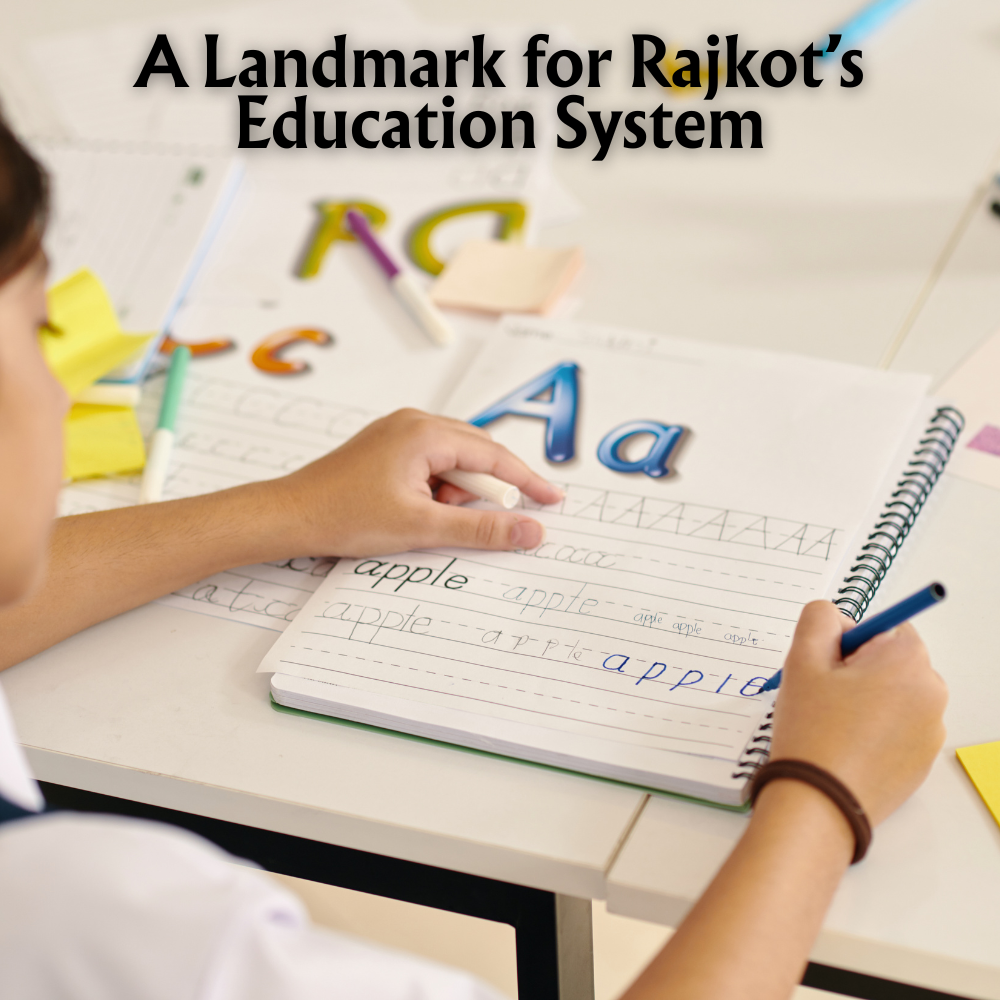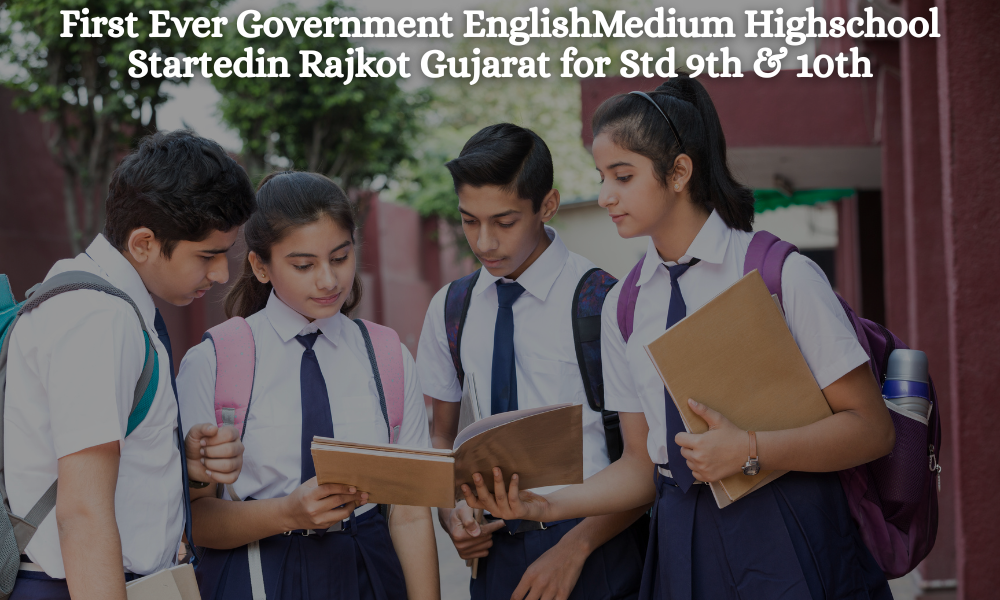
Rajkot has made a significant advancement in education by opening its first government-run English medium high school for STD. 9 and 10. The goal of this move is that they wanted underprivileged students to have access to quality English education, without the huge expense of private schools. In addition to Rajkot, new schools in Gondal, Rajgiri, and Umrala, have also started schools and raised the possibilities for many children.
A Landmark for Rajkot’s Education System
When we walk by the new government English medium high school in Rajkot we don’t think of it as “just another school building.” We think of it as a quiet revolution in the education story of the city. After years of parents in low-income families feeling like they were being blackmailed into a private school that they could not afford, or settling for schools that did not offer English medium education, a new choice is available to these families.
Rajkot now has a government, high school that serves Std. 9 and 10 in the English medium. While this is more than just a shift in language, it is about giving underprivileged students a real chance to contend with higher studies and careers where English language proficiency becomes a determining factor.
Picture a bright student from a low-income home in Bhaktinagar or Mavdi who previously had to travel several kilometers and burden their family with high fees to study in English, who now has the
opportunity to get the same education within walking distance of home, in a well-resourced government schooling system.
Investment Casting Manufacturer in Gujarat – Investment Casting Supplier in Gujarat
The project also represents a larger shift in the evolution of public education in Gujarat. Incorporating English medium education in government schools helps narrow the divide between costly private
schools and lower-cost public schools. This approach is not just for Rajkot; many more schools like this are opening in Gondal, Rajgiri, and Umrala as well. This means children in rural and semi-urban areas may not have to leave their communities just to do better in school.
For a city that has long looked to education as a beacon of hope, for a place like Rajkot this is a promise, not just an event. A promise that a student’s talent, not family financial circumstance, should dictate a student’s distance travelled as a student. And if this model can be successful, it could be something many more towns and cities will want to be part of.

No More Long Travels for Education
In many areas of rural and semi-urban Gujarat, the main obstacle to obtaining good education is distance
– not a lack of interest. I have seen students get up before dawn, take a bus for an hour or longer, and
return home in the evening mentally exhausted. Many of these students get so tired of long travel every day they feel as if continuing their education is impractical.
Now that English medium government high schools have flourished in towns like Gondal, Rajgiri and Umrala, the frustration of long travel for education is finally subsiding. Now students can pursue Std. 9 and 10 education in English in their own towns without long travel affecting their study time. Parents no longer are concerned about their child’s safety while travelling and students can use that travel time to do their homework, hobbies or relax if they choose.
But this isn’t just convenience, this is an emotional lifeline. When education gets closer to home, drop out rates go down, self-confidence increases, and more young adults pave a path toward college and careers.
And also one more great news is, in the Rajkot sub-district area, the government authorized the opening of three new Gujarati medium schools in Gokhlana, Raningpur, and Umrala, which are already under construction, meaning quicker access to education for students in localities, and by opening these schools the distance children need to travel for school will reduce when they are completed, and that strengthens quality education in rural rural areas.
Investment Casting Exporter in Gujarat– Investment Casting Foundry in Gujarat
Sign-Up and Early Response
The response to Rajkot’s first government-run high school delivering an openly English medium education has been staggering. Before the first week was over the school enrolled 78 students – a clear indication of how eagerly parents were waiting for this option to become available in the community. For many families, this is the first time they can give their children the opportunity to receive an English
medium education without the burden of paying private school fees.
I have also talked with parents of school-aged students who are in similar situations, and there is always a consistent relief in their voices. They are not solely relieved about the financial aspect, they are
pleased that their children will have an opportunity to learn in an environment that is consistent with rapid advancements towards modern educational practices. The students also appear keen, and are happy to be starting in a new school with appropriate resources, tools, and opportunities.
There is a clear message in this early rush of admissions for the school: when access to quality education becomes reality families are willing and ready to take advantage of such an opportunity.
In Short
Rajkot has made significant strides in establishing its first government-run English medium high school, in addition to opening new Gujarati medium schools in surrounding areas. These steps are making
affordable, quality education available for many students who, until now, faced significant obstacles. With the positivity around increasing early enrolments, new students and families will continue to benefit, without much travel, from Rajkot’s very reasonable progression into education. This is an important step towards inclusive education for all.



